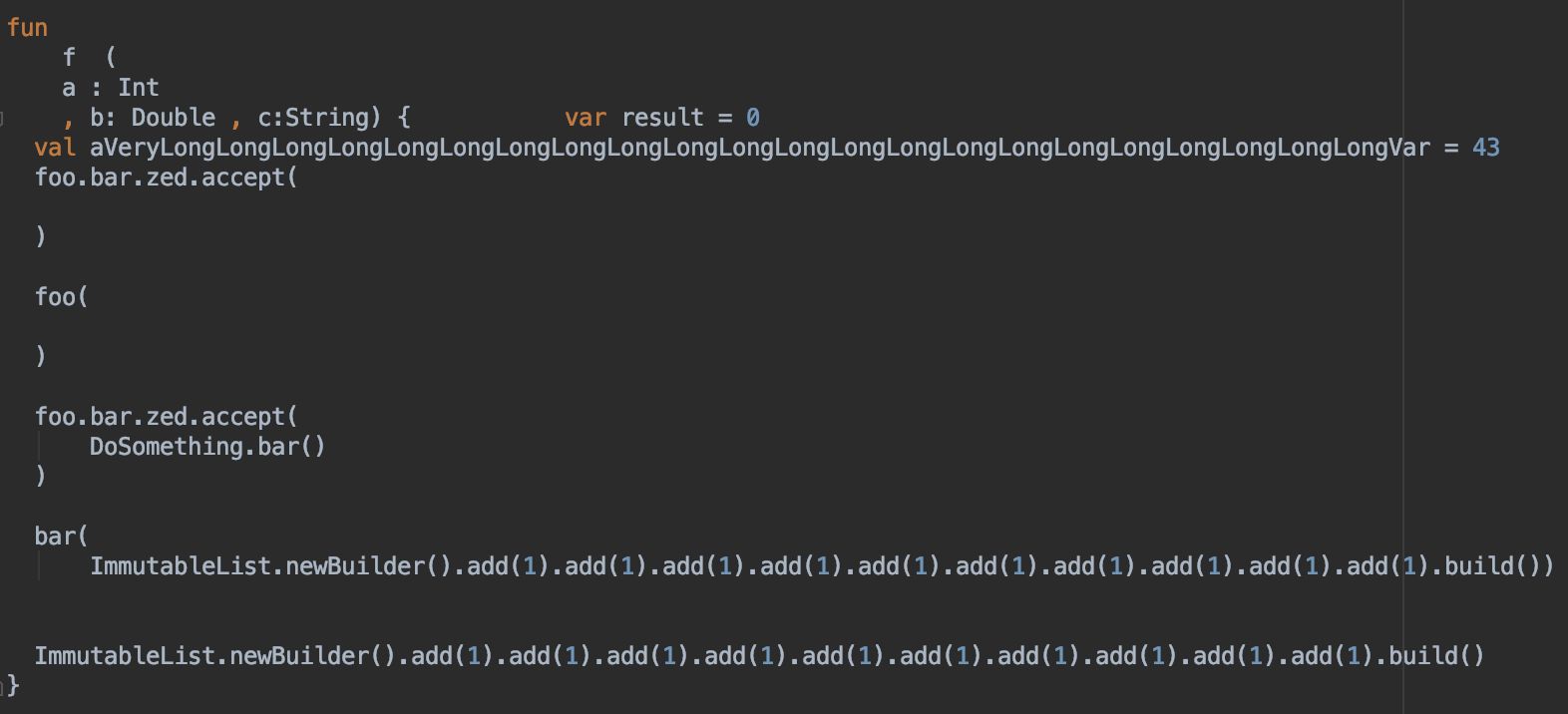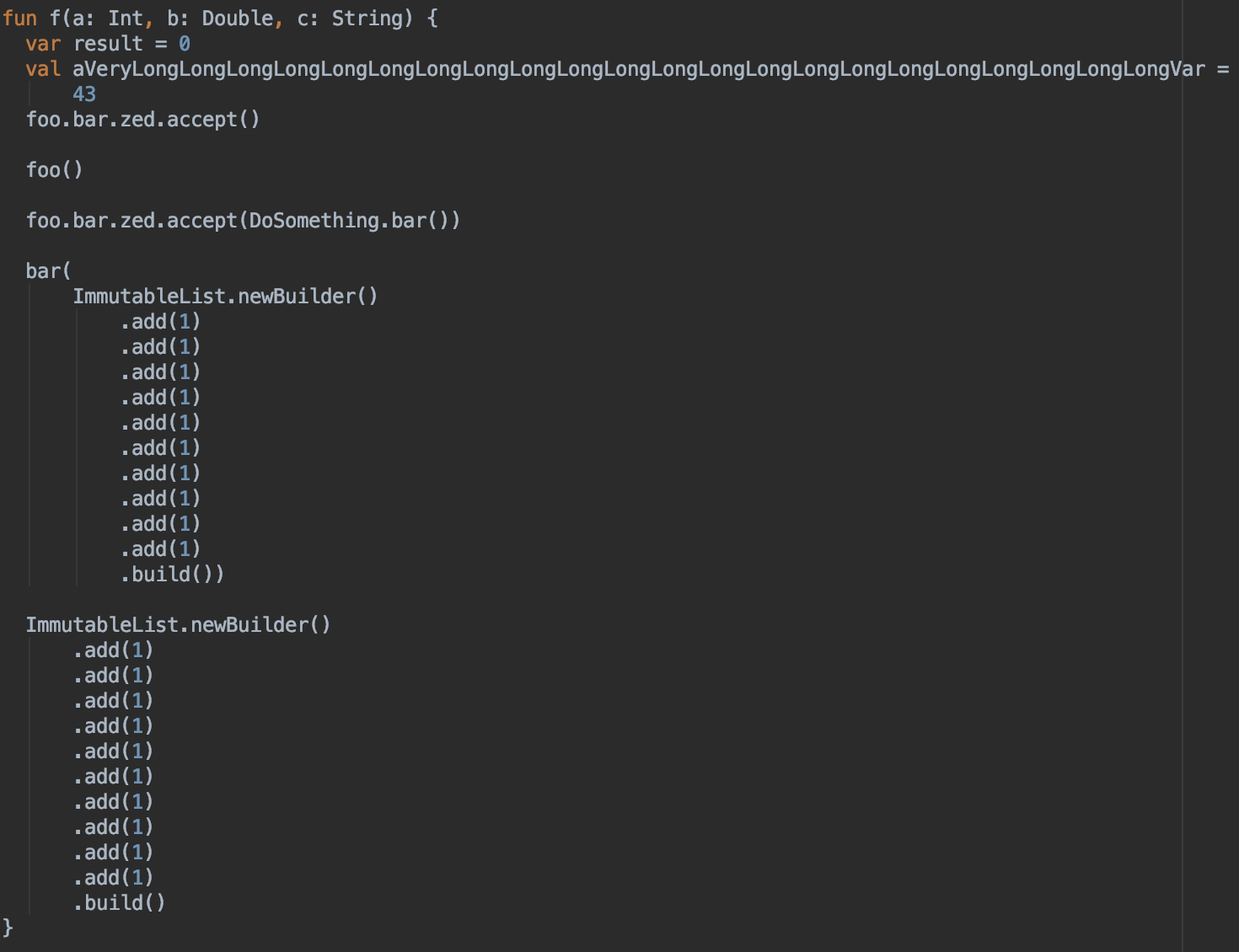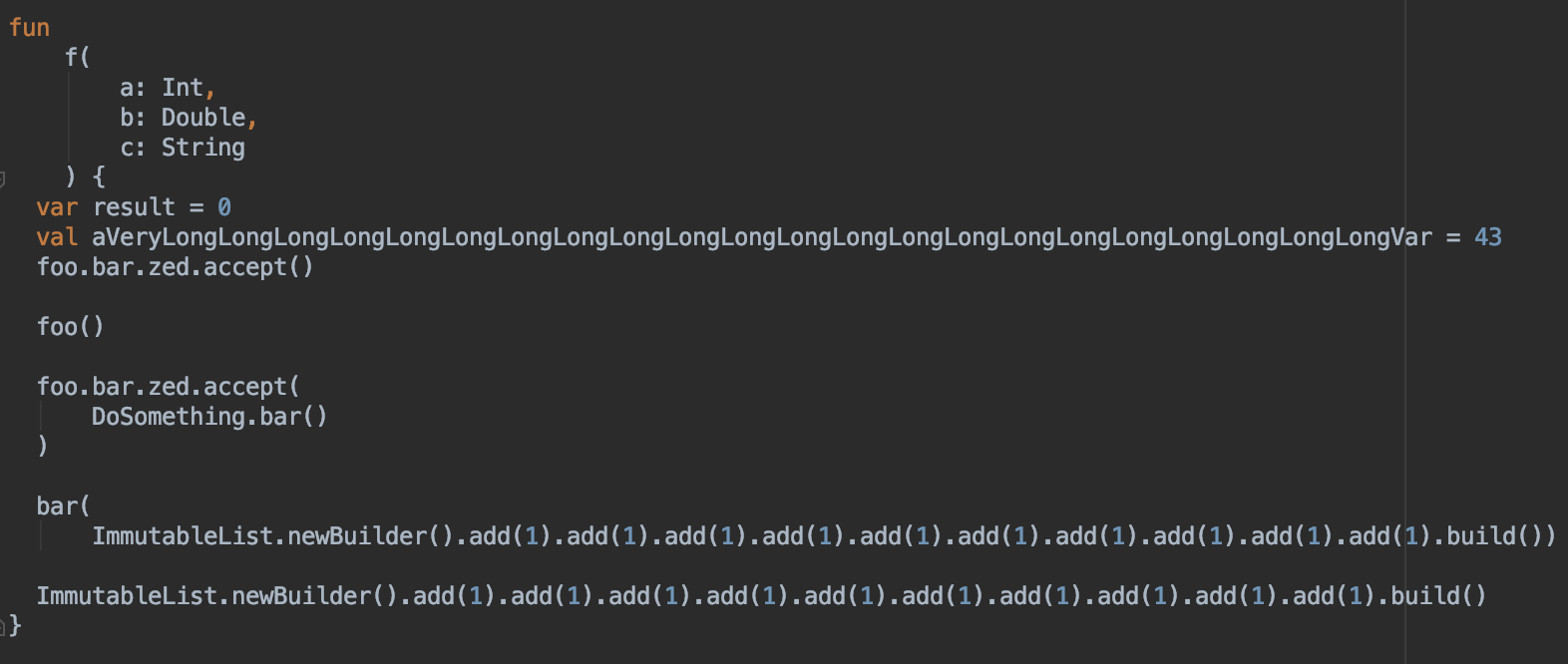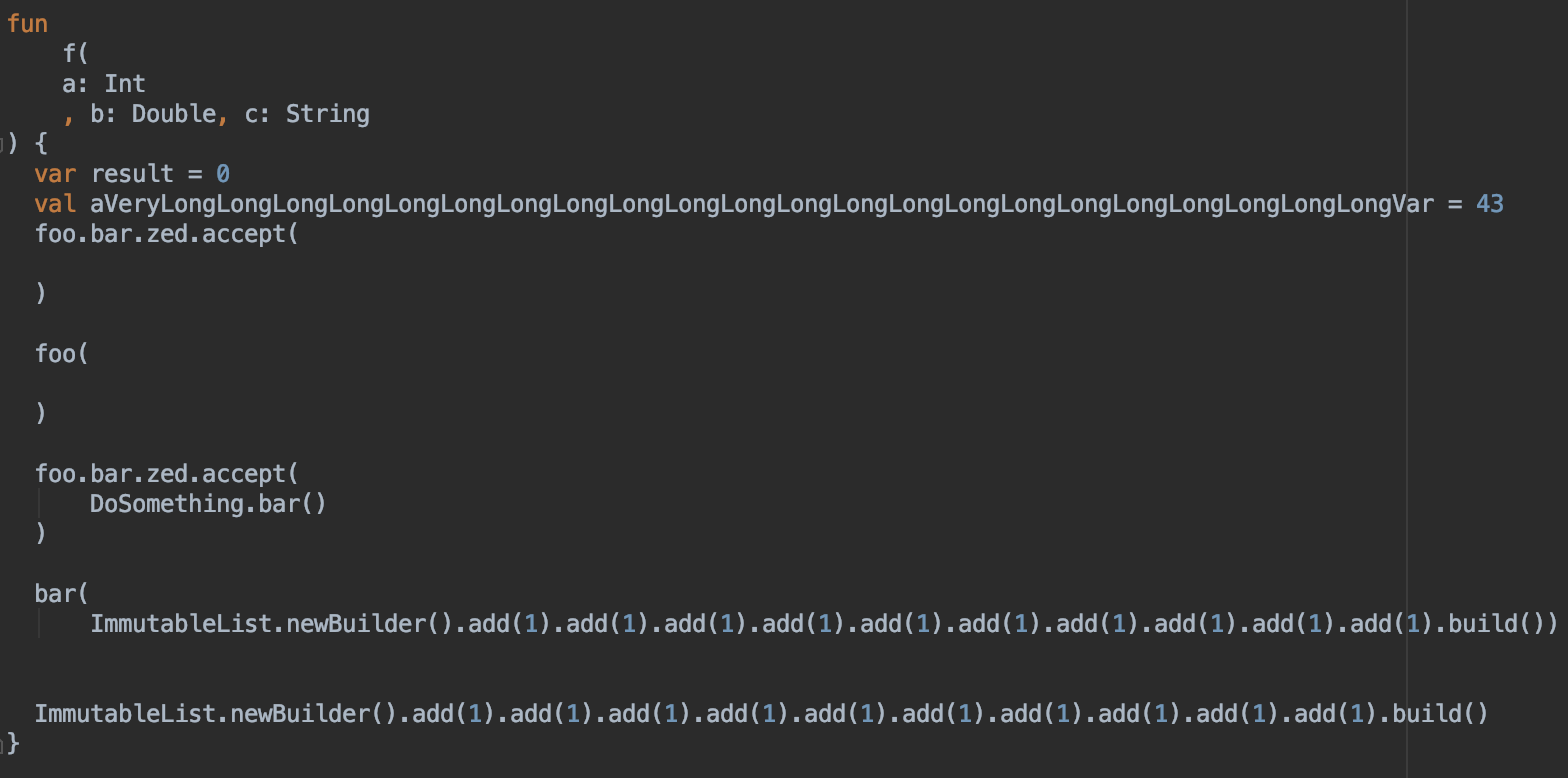ktfmt is a program that pretty-prints (formats) Kotlin code, based on google-java-format.
Note that ktfmt still has some rough edges which we're constantly working on fixing.
The minimum supported runtime version is JDK 11, released September 2018.
| Before Formatting | Formatted by ktfmt |
|---|---|
 |
 |
For comparison, the same code formatted by ktlint and IntelliJ:
Formatted by ktlint |
Formatted by IntelliJ |
|---|---|
 |
 |
We have a live playground where you can easily see how ktfmt would format your code. Give it a try! https://facebook.github.io/ktfmt/
A
ktfmt IntelliJ plugin
is available from the plugin repository. To install it, go to your IDE's
settings and select the Plugins category. Click the Marketplace tab, search
for the ktfmt plugin, and click the Install button.
The plugin will be disabled by default. To enable it in the current project, go
to File→Settings...→ktfmt Settings (or IntelliJ IDEA→Preferences...→Editor→ktfmt Settings on macOS) and
check the Enable ktfmt checkbox. (A notification will be
presented when you first open a project offering to do this for you.)
To enable it by default in new projects, use File→New Project Settings→Preferences for new Projects→Editor→ktfmt Settings.
When enabled, it will replace the normal Reformat Code action, which can be
triggered from the Code menu or with the Ctrl-Alt-L (by default) keyboard
shortcut.
To configure IntelliJ to approximate ktfmt's formatting rules during code editing,
you can edit your project's
.editorconfig file
to include the Kotlin section from one of the files inside
docs/editorconfig.
Not all of ktfmt's rules can be represented as IntelliJ editor settings, so you will still
need to run ktfmt. Alternately, that file can be used as a reference to manually change
the project's code style settings.
Download the formatter and run it with:
java -jar /path/to/ktfmt-<VERSION>-jar-with-dependencies.jar [--dropbox-style] [files...]
--dropbox-style makes ktfmt use a block indent of 4 spaces instead of 2. See below for details.
Note: There is no configurability as to the formatter's algorithm for
formatting (apart from --dropbox-style). This is a deliberate design decision to unify our code
formatting on a single format.
A Gradle plugin (ktfmt-gradle) is available on the Gradle Plugin Portal. To set it up, just follow the instructions in the How-to-use section.
Alternatively, you can use Spotless with the ktfmt Gradle plugin.
Consider using Spotless with the ktfmt Maven plugin.
ktfmt uses google-java-format's underlying engine, and as such, many items on google-java-format's FAQ apply to ktfmt as well.
In particular,
ktfmtignores most existing formatting. It respects existing newlines in some places, but in general, its output is deterministic and is independent of the input code.ktfmtexposes no configuration options that govern formatting behavior. See https://github.com/google/google-java-format/wiki/FAQ#i-just-need-to-configure-it-a-bit-differently-how for the rationale.
These two properties make ktfmt a good fit in large Kotlin code bases, where consistency is very important.
We created ktfmt because ktlint and IntelliJ sometime fail to produce nice-looking code that fits in 100 columns, as can be seen in the Demo section.
Two reasons -
- Many of our projects use a mixture of Kotlin and Java, and we found the back-and-forth in styles to be distracting.
- From a pragmatic standpoint, the formatting engine behind google-java-format uses more whitespace and newlines than other formatters. Using an indentation of 4 spaces quickly reaches the maximal column width.
However, we do offer an escape-hatch for projects that absolutely cannot make the move to ktfmt because of 2-space: the --dropbox-style flag changes block indents to 4-space.
- Open
pom.xmlin IntelliJ. Choose "Open as a Project" - The IntelliJ project will unfortunately be broken on import. To fix,
- Turn off ErrorProne by removing the compiler parameters in IntelliJ at the bottom of "Settings -> Build, Execution, Deployment -> Compiler -> Java Compiler" (see google/google-java-format#417)
- Currently, we mainly develop by adding tests to
FormatterTest.kt.
- Run
mvn install - Run
java -jar core/target/ktfmt-<VERSION>-jar-with-dependencies.jar
See RELEASING.md.
Apache License 2.0